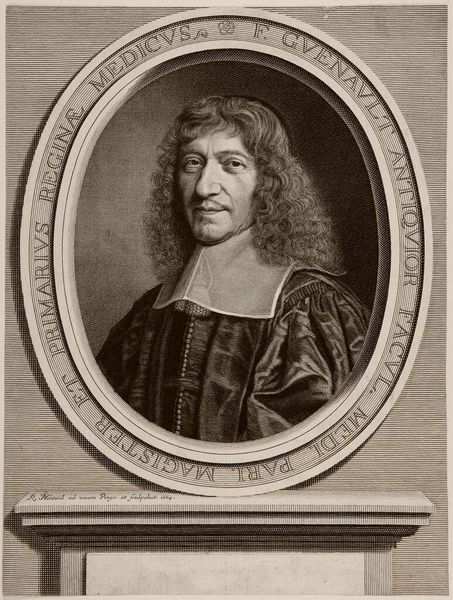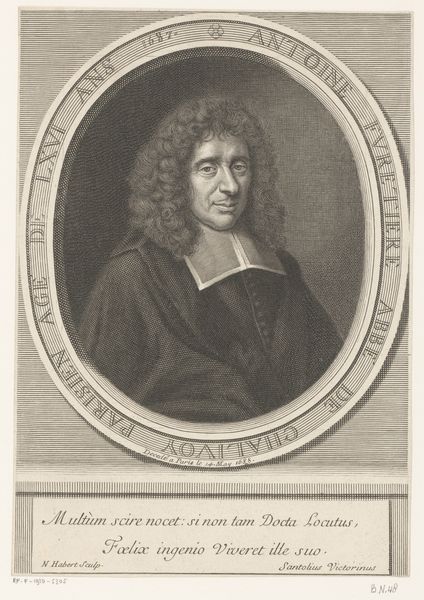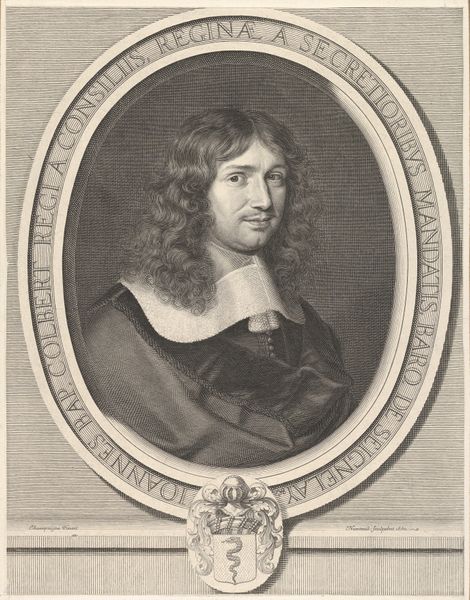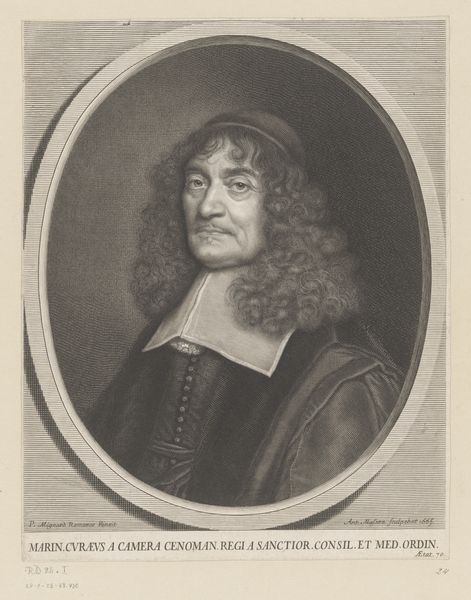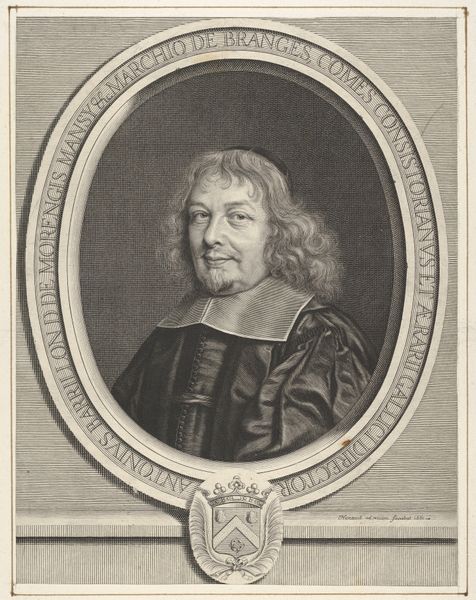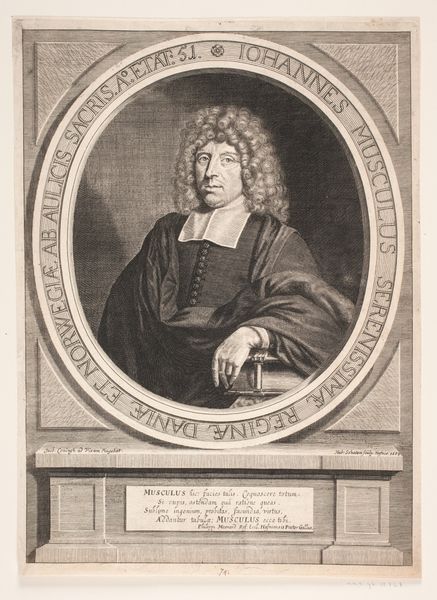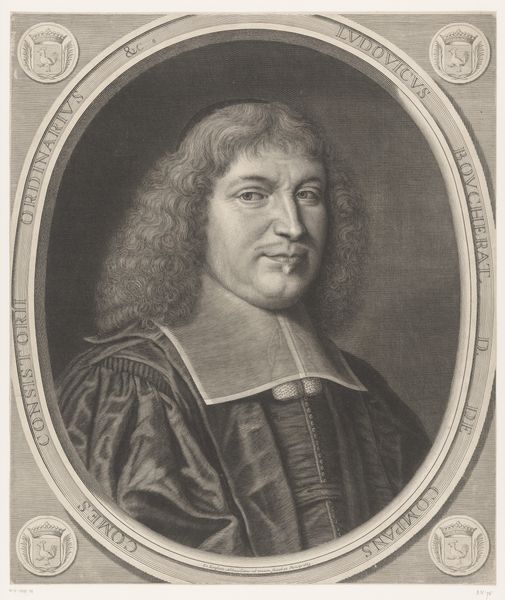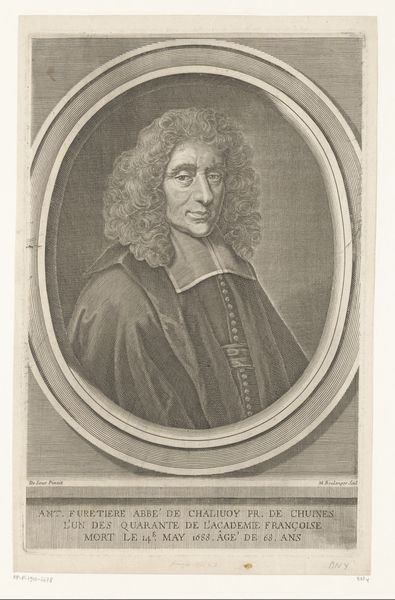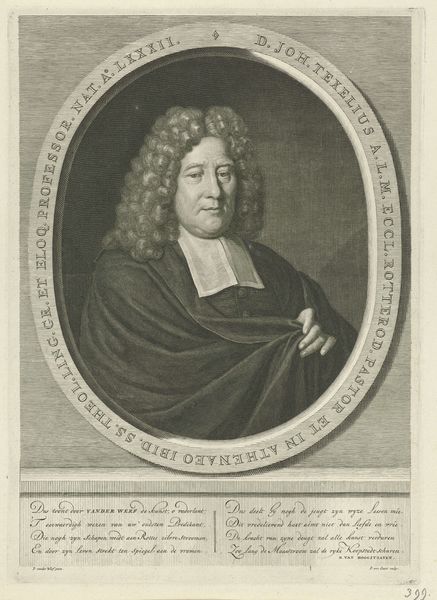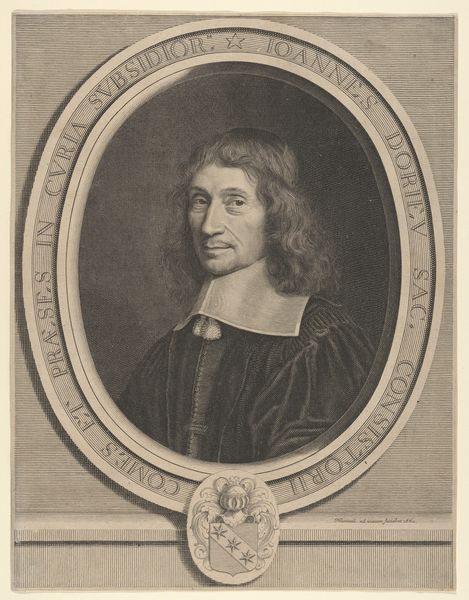
drawing, print, etching
#
portrait
#
drawing
#
baroque
# print
#
etching
Dimensions: Sheet: 12 3/16 × 9 15/16 in. (31 × 25.2 cm)
Copyright: Public Domain
Curator: Before us we have Robert Nanteuil’s portrait of François Guénault, crafted between 1659 and 1669. The artwork resides here at the Metropolitan Museum of Art and showcases Nanteuil's skill in printmaking. It is both an etching and an engraving. Editor: My initial reaction is one of subtle power. The way the light catches Guénault's face within that oval frame almost feels like a captured moment, poised between intimacy and officialdom. You see the meticulous etching creates a depth I wouldn't immediately expect. Curator: Absolutely. The image really is about layers both literal and figurative, what does it mean that this portrait uses the methods of reproduction typically afforded to pattern books for clothing designs, books of ornament, how-to manuals? Does its status shift? The image must have been made accessible through such print technologies. Editor: That’s very perceptive. Considering that he was the first physician to the Queen, the symbols become incredibly telling, doesn't it? Even in the curve of his wig, there's a symbolic language being spoken— one of status, profession, but perhaps also inner character. Is he trustworthy? He’s presented as reliable, which can carry significant weight given the era's medical landscape. Curator: Indeed. Nanteuil’s choice of printmaking democratized his image. A hand-drawn portrait would limit visibility to a select few, mostly the subject’s close acquaintance and powerful associates. The question for us is what about portraiture lends itself to being reappropriated for use in printed format. Editor: And I think the printmaking technique is itself a message, underscoring precision, intellect and method. It makes me consider: What cultural narratives does it reinforce or perhaps subtly challenge given what you mentioned. The choice of medium does shape our perception. Curator: I completely agree. Exploring those narratives allows a richer experience of works of art. Editor: Absolutely! I find I look at it differently now knowing that process, thank you for enlightening me!
Comments
No comments
Be the first to comment and join the conversation on the ultimate creative platform.

